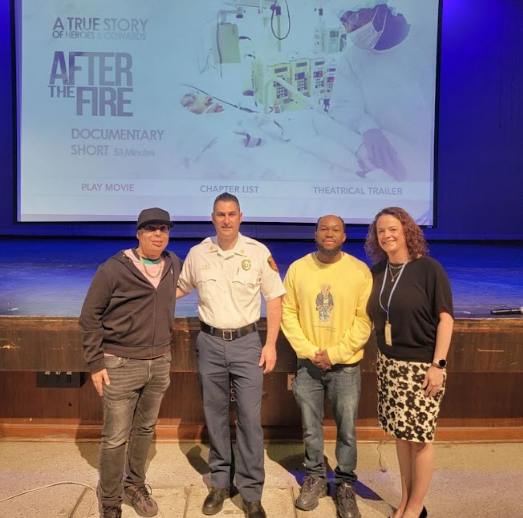
On April 30, an assembly was brought to WHS seniors and faculty by Shawn Simmons and Alvaro Llanos, two survivors of the 2000 Seton Hall University fire that left three dead and dozens of others injured.
While WHS seniors did not expect an assembly and many instead were hoping for a couple hours of extra sleep while the rest of the school had state testing, listening to Simmons and Llanos was time well spent.
Simmons and Llanos shared their story with WHS students, as they do with students around the country, about what happened on January 19, 2000, the day that changed their lives.
As Simmons and Llanos explained, it was a frequent occurrence for the fire alarms in their freshman dorm building to go off. So, the night of the fire, they originally thought it was just another prank, a type of prank that proved to be overly reckless and dangerous. Unfortunately, it was not just another prank and the blazing flames they opened their door to were all too real.
Simmons and Llanos were two of the most severely injured from the fire. They were admitted into the same hospital where they went into comas and sustained severe, permanent scarring. Simmons was first to make his recovery, and when Llanos awoke from his coma, Simmons was right by his side and never left.
The two now make it their priority to make sure another incident like the one they went through never happens again. Going around the country, Simmons and Llanos travel to different schools to present the documentary that shows the aftermath of the Seton Hall fire, including their recovery and the consequences the two men faced who set the fire. After the documentary, Simmons and Llanos opened the floor to questions for students to ask about the fire and their recovery.
Simmons and Llanos were able to deliver first-hand accounts of how affected they were by a prank gone wrong when two students ignited a banner in their dorm. Their emotional story stuck with me, as I’m sure it did with many others and I will take their advice strongly into consideration as I leave for college next year.
Due to this assembly, I now have a better understanding of fire safety and of what to do in an emergency. Before hearing this presentation, I probably would not have taken the time to think about how I could put myself in a safer position at college, such as knowing where all the exits are in any building.
With each assembly in which speakers come to the school, the lessons that are taught are more likely to stick with students as opposed to a reading in a classroom. Hearing first-hand accounts during assemblies offers students the potential for so much learning that wouldn’t be as effective in traditional classroom settings.
